End of an Era Part 1: Steel Mill Portraits - Melt Shop
Tales of an endangered species -- the American steel worker...
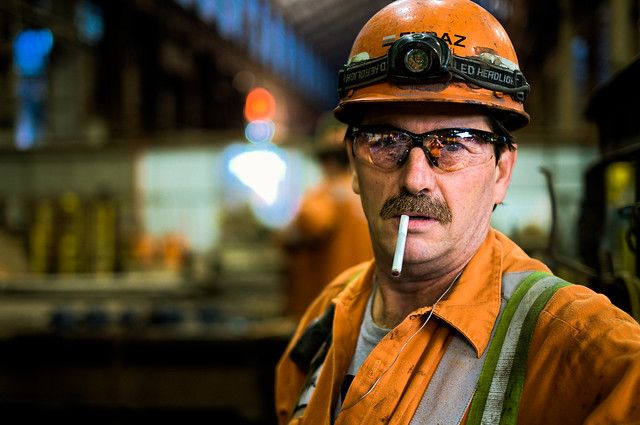
"Tho' much is taken, much abides; and tho'
We are not now that strength which in old days
Moved earth and heaven; that which we are, we are;
One equal temper of heroic hearts,
Made weak by time and fate, but strong in will
To strive, to seek, to find, and not to yield."
-- "Ulysses" by Alfred, Lord Tennyson
Originally published November, 2013
An Era Ends
It's over, at least for now -- unless the Phoenix once more rises from the ashes as it did before. The steel mill where I've spent the last 22 years has closed pending a sale -- though no buyers are lined up. It's possible that this nearly 100 year old enterprise could be returned to operation in the right hands. Sadly, those hands may not exist anymore.
This "End of an Era" series will showcase photos of the men, women and machinery of steelmaking at the site. I do want to particularly focus on the people because as necessary as the machinery might be, without the heart and character unique to steel workers -- and really heavy industry workers in general -- there would be no steel. It's a tough business, a tough job, and takes a certain type of tough person to make a go of it.
This first post will present some of the men and women of what's known as the "melt shop" where scrap steel, minerals, and alloy metals are combined to make new, fresh steel. In our case, to make heavy gauge plate steel for large construction like heavy machinery, pressure vessels, ship hulls, bridges and so forth. Steel plates up to nearly 160" wide and very,very long, and in thicknesses from 3/8" to 5" were the mills product line.
In this post I'll show you some of the people, and talk about the place and it's history. I'll showcase folks in other units later, and talk a bit about the actual production of steel -- but for now, let's deal with the rise and fall of this enterprise.
As always, you can "click through" the photos to see more information about the subject.
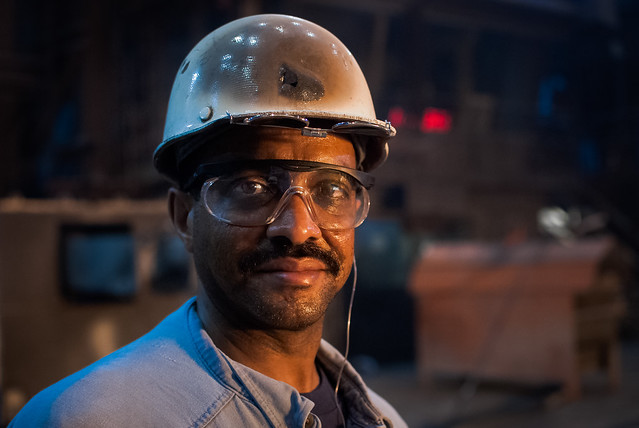
If you are interested in the full set of pictures, they are available as a set on flickr, or as a slide show on my main site.
History of the Mill
The mill I worked in was started as a family business early in the 20th century by the Worth family and it was called Worth Steel. It remained in family hands for about 40 years before being gobbled up by the J. D. Rockefeller empire and was added to his "Colorado Fuel and Iron" family of companies and rechristened "Claymont Steel".
After about another decade, the mill was bought by a French consortium and operated as "Phoenix Steel" (an ironic term in retrospect). But in 1986 the plant collapsed under the combined weight of labor union and management malfeasance -- and by this I do not tar unions in general but only that union at that time. For two years it was idled and was being disassembled to be sold as salvage when an unlikely savior loomed on the horizon: the "Red" Chinese who started it back up in 1988.
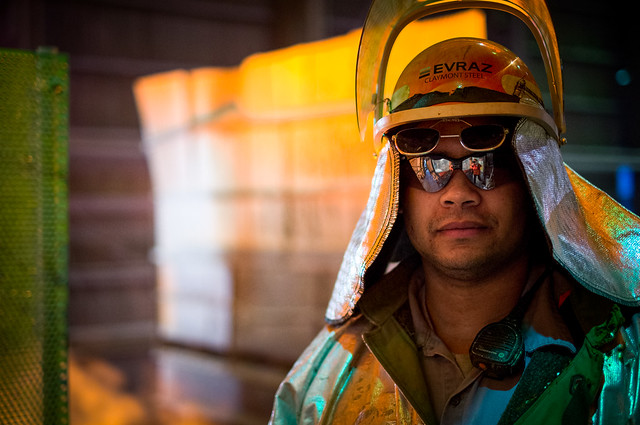
The Chinese Connection
The China Industrial Trust and Investment Corporation ("CITIC") made a deal with the state of Delaware to get a tax abatement. Many "experts" said they would never get it running, and if they did, would never make a go of it.
The Chinese ran the mill successfully for almost 20 years. They christened it "CitiSteel" and it became a well known player in the industry for a number of reasons.
I will offer an opinion on the Chinese and it's an insiders view, and just one man's view -- but I was impressed and loved working there. The managers they sent from China, and the ones they selected in the USA, were of a type that looks for talent and turns it loose. Once you demonstrated an ability, you were given what I consider unprecedented leeway to develop and implement your ideas. They had little to lose, and everything to gain by using creative and competent people to find ways to make an old, obsolete mill pay off.
I worked with such an amazing array of good people at all levels in my time there. Many might have been considered "mavericks" in a more conventional organization but together they were an incredible force.
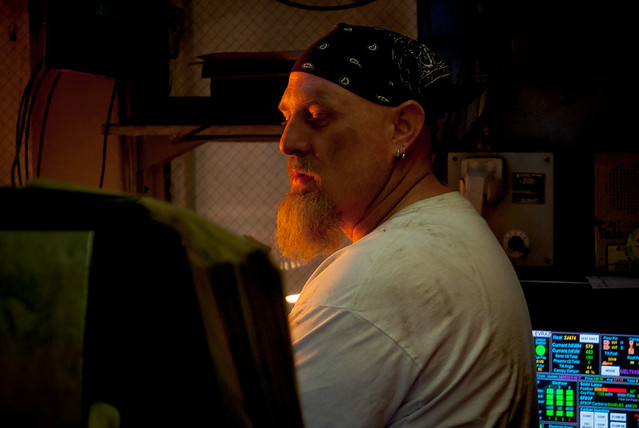
The simple fact was that the experts were right about how this was an old, somewhat worn out and obsolete facility whose cost of production would be high. How then, to make any money?
An Old Mill, An Old Idea
I'm not sure who took us in this direction, but I suspect it was the now retired (I think he fled our Russian owners, more on that later) VP of sales who was named Steve Lundmark. The idea that kept CitiSteel in operation was the tried and true one: customer service.
There are those who simply regard some things as boring commodities whose sale is simply a matter of taking and fulfilling orders as your business allows. The really big players have the luxury of telling their customers they may have to wait for a product because they're not scheduled to make it yet.
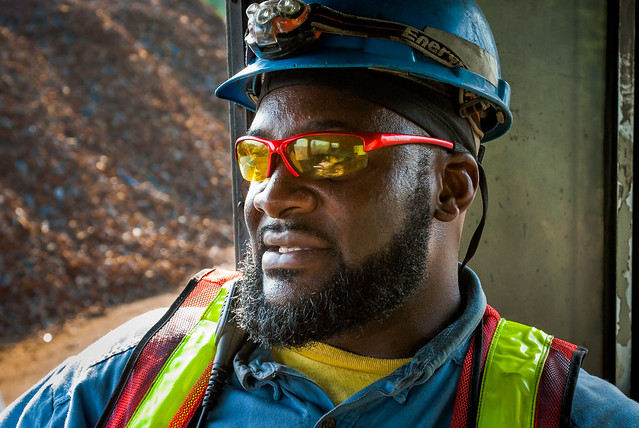
But CitiSteel was not a big player. With a typical capacity of less than 400,000 tons a year they were a small player. Furthermore, trying to become an exclusive supplier to just a few large customers or industries is fraught with peril.
A safer strategy might be to diversify in much the way investors do -- but in this case not to diversify your product so much as to diversify your customers. If you could find a way to take a number of smaller orders from many customers in many market segments (steel supply centers, heavy equipment, bridge builders, ship builders etc.) you could protect your business better from a slump in any particular segment or of a particular customer.
But why would anyone just want to make small orders? How can you make such a strategy work?
Approaching the Market
The answer that was apparently chosen -- and I was not close to this part of the business so I have it in general terms only -- was to supply customers that need things that are a little different, or in time frames that are a little tight. When a customer called and said, "I need an [odd plate size] and I need it in less than a month!" then our sales and production team would find a way to make it in time. If there was a problem with a plate, we'd make another one, pay a claim and do it quickly.
By making custom sizes rather than industry standard sizes, we could potentially save a customer a good deal of time and waste trimming plates to their final size and shape.
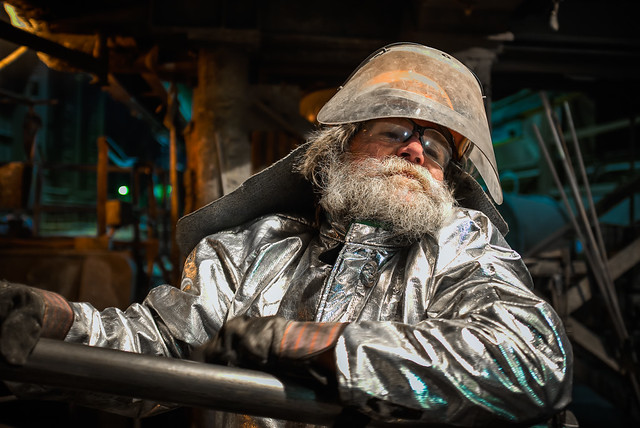
The result: we could justify higher prices, and won awards year after year for being the best in customer service among steel plate producers. Internally, we innovated and overcame the challenges that come with not making "batches" of the same material for any length of time, but instead constantly changing-up dimensions and steel grade. And we did it all with a pile of junk.
This strategy, and an adaptable team that wasn't married to market orthodoxy, made the place work. In other words: it was the people, not the old crap we were working with. We transcended that.
The Chinese Invasion Retreats
Operating an old steel mill thousands and thousands of miles from home is not easy. The amount of profit that could be sent back to China was likely small. I sometimes wonder if the CITIC operated CitiSteel in part to train their best and brightest in how to deal with a capitalist economy. Certainly EVERYBODY they sent here were stellar folks who obviously represented some of their best management and engineering talent.
But there were many things that may have contributed to the Chinese leaving the American steel market. Volatility of that market is a huge issue. Then too, many of their best people decided they wanted to stay in America and did not return to China -- leaving CITIC in order to pursue their own path to American citizenship. China now is not like the old regimes in China and the old Soviet Union: if you want to leave, you can unless you are in government and then it gets sticky.
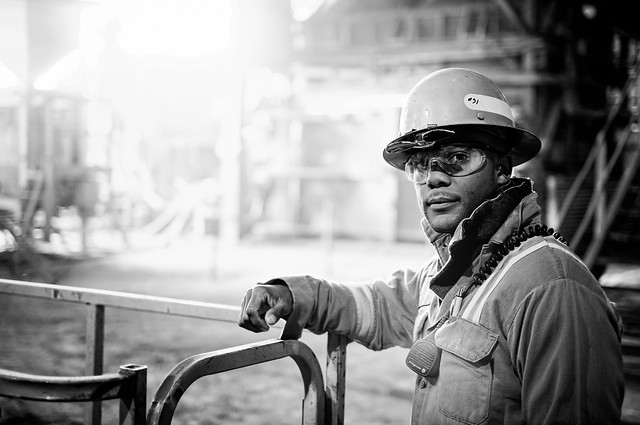
So they were at times bleeding money, bleeding talent, and they had to look at things and ask themselves "is this worth it?" They apparently decided it wasn't and put the mill up for sale.
And so America takes back CitiSteel, and the end began... but it began with great hope.
Mergers and Acquisitions: The Devil's Bargain
I know that's a possibly controversial section title but I think it fits considering where it led. In the prototypical bargain with the devil, you get something you think is very, very good -- but the price you pay in the end is terrible indeed.
Basically a very well run M&A investment firm called HIG Capital out of Florida bought the mill I think it was in late 2005 or thereabouts -- don't remember but it doesn't matter so much. I seem to recall that they bought it for around $130 million in cash and assumed debt and it was a bargain.
So what did they do? Plenty! They pumped up internal operations, made capital equipment investments, pushed production and brought us record years leading up to late 2008 when the market crashed. After just a year or two from when they purchased the place, they took the company public as an IPO and doubled their money. Nice work! They took a page out of the book of the mills history and rechristened it "Claymont Steel".
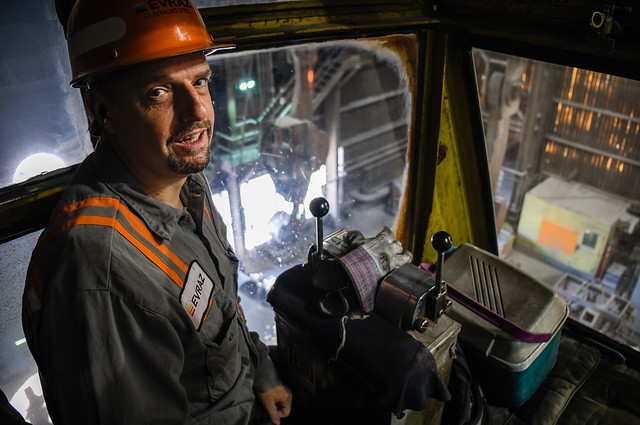
The author of many of the changes was a controversial figure known as Jeff Bradley. I personally got along with him but he was demanding, critical, and not patient with foot dragging. His job was to be a change agent transforming the company into a more powerful player in the market while retaining its reputation. He succeeded, but many resented his leadership.
The improved production profile brought the company to the attention of a Russian owned international metals and mining company known as Evraz that was acquiring north american assets. They bought the company for a simply astounding amount that exceeded a half BILLION dollars.
And so we come to the genuine, American "corporate era" which was the beginning of the end for the mill.
EVRAZ: The Great Satan
Well, that's probably not fair, but it's hard for us who watched them operate be objective and not be bitter. The fact is, they were clueless about what they bought and how to best use it. This article may seem to be an indictment of modern business practices but it's not really -- it's an indictment of those who "think they know" but actually are without real knowledge of the business they are running. There are many modern American businesses that are excellently managed -- just not this one.
Evraz pushed Jeff Bradley out and brought in their own men. In fact from then on the position of "VP/General Manager of Claymont" became a revolving door.

The new management did quite a number of things. The mill had managed to keep the very old equipment -- which was of the first generation of "mini-mill" technology rolled out in the 1960's -- by having it's own machine and fabrication facilities. This make it possible to manufacture no longer available parts on a timely basis.
Wasting Money through Cost Savings
The new management eliminated the fabrication shop and decimated the machine shop opting instead for outside services... which of course had very little knowledge of our gear and needs and were often working from obsolete hand-marked blueprints that our people were used to but they were not. Also, they had other customers to serve besides us. The result: long lead times and sometimes incorrect parts.
They also tried to eliminate our "facilities" group which maintained our large fleet of mobile equipment -- railroad locomotives, fork lifts the size of small houses, and smaller fork lifts, loaders, trucks and so forth. But once again, using outside contractors resulted in delays and problems. Steel mills are HARD on equipment and maintenance can't be deferred and repairs are required often.
All of these things took a huge toll on "downtime" -- periods where your mill should be running but isn't because of a problem.
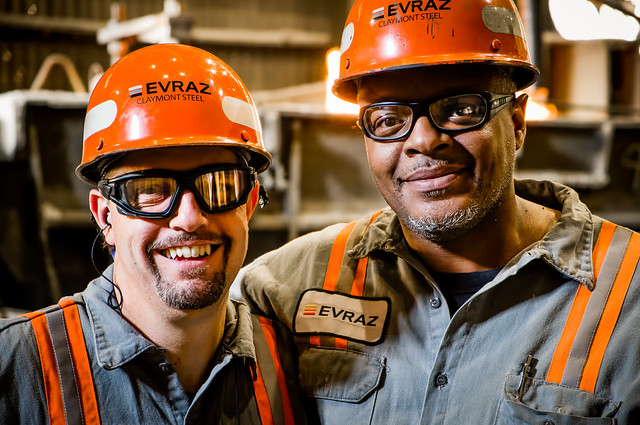
In my next installment in this series later in December I'll present some more images of the great people who manned the facility, and detail the final days of the mill and how it finally paid the devil his due and went straight to hell under a cartoon caricature of modern "professional" management.
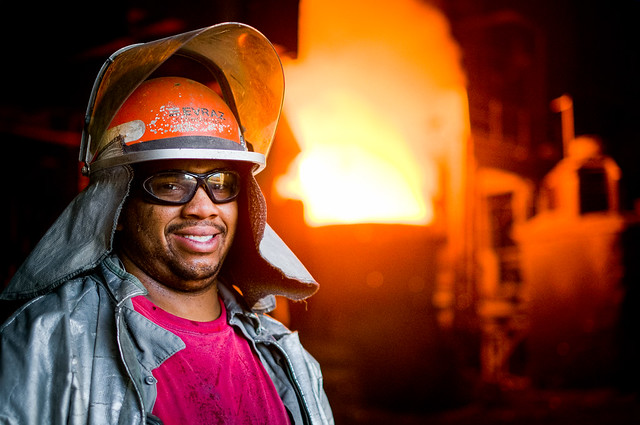
"In any great organization it is far, far safer to be wrong with the majority than to be right alone." -- John Kenneth Galbraith
|